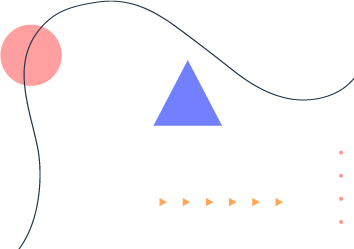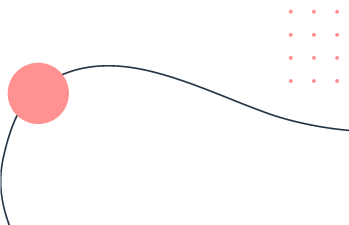Why is AI important for
digital marketing agencies?
AI can not just do the basic spade work for marketers but can also gaze down the proverbial crystal ball with its clairvoyant powers and deliver results at half the manual TAT and cost to companies with the right kind of prompts and knowledge bases.
Findings have led the way to the light with a 27% marked uptick in AI adoption and implementation of the 341 surveyed top marketers of for-profit U.S. companies. The bi-annually held CMO survey reported the following three top scenarios of AI deployment in the marketing genre:

Deploying AI to streamline mundane and creative tasks can be extremely important for digital marketing agencies along the following three pillars: personalization, optimization, and innovation.
Let’s delve into all of them:
Delivering personalized experiences
One of the most magical aspects of AI is that it can help you deliver a personalized experience to every valued customer. With tools for social listening, web analytics, and an in-depth analysis of customer behavior and purchase history, AI can analyze huge chunks of data from a repertoire of erstwhile-mentioned sources.
Marketers can use it to create customer segments, personas, and profiles. AI can also use natural language processing (NLP) and natural language generation (NLG) to create relevant and engaging content for each customer, such as emails, headlines, landing pages, and ads.
Marketers can leverage a wealth of AI tools to curate and offer personalized experiences, such as Jasper, 6Sense, Copy.ai, Persado, Lately, etc.
Data Analytics
In marketing, AI can analyze massive campaign data sets and provide concise insights.
AI can also forecast the results of marketing campaigns based on past data, such as how customers interact and engage with your brand, buy your products/services, or open your emails.
This will help you optimize your time when planning and creating marketing materials for your campaigns.
Looking to leverage AI to save time and efforts you put into client projects and still deliver value?
Generating content
AI tools can be used to come up with email subject lines, blog copy, and social media posts. But the jury is still divided on the efficacy of these, and human experience is still needed to peruse the copy before you may consider hitting the publish button!
Many marketers may use AI tools such as Writesonic or Copy.ai to curate first drafts, which they can later refine and render a human touch, too. This helps quicken the content delivery process by reducing the massive amount of time that can be spent coming up with ideas for first copies.
A recent infographic published by Email Uplers brought up some interesting results.
When asked whether AI tools were already a part of RPEOrigin’s email copywriting tool kit, this is what Ryan Phelan, Managing Partner, RPEOrigin, had to say about the question at hand,
“Interestingly enough, the premise that AI can help bridge the gap between effective copy and scale has not yet come to fruition. We do not use AI for copywriting but are exploring a wide array of other uses that may increase production. Our approach is not to replace something for the sake of innovation, but to do so in a responsible matter that benefits the customer and end consumer.”
On the other hand, some are more candid and experimentative with the advent of the inevitable change on the horizon. Here’s what Des Brown, GM TouchBasePro, had to say when posed the same question,
“I think I'd be chastised by any marketing community if I say I don't use ChatGPT or Google's Bard, but they are one of my email idea-generation tools, which is a start.
My ESP, TouchBasePro, has some advanced AI content and copy features, which include AI-article processing and recommended content. This saves a ton of time moving copy over to the email environment by clustering content preferences based on the activity users on a website are taking. This works super well for Publisher customers I work with. It takes away a ton of the manual segmentation and effort in content creation when news feeds into emails.”
So, the binding segue to this discussion may be that some welcome AI-generated content with open arms while others are a little conscious of going out and about with this new baby of generative AI.
What AI can do for your
marketing campaigns and goals?
We are standing on the cusp of a major wave of change that some may call disruptive and feed the fears of an ever-compressing job economy. However, at the cost of standing cliched, we maintain that change is the only constant, and it is in the best interest of our marketing agencies community to make the best of the power on offer that comes with the incorporation of AI.
Let’s crunch some numbers before we proceed to leverage AI to achieve your marketing goals and campaigns.
- According to Statista, the projected market share for AI in marketing was pinned at a humongous USD 15.84 billion in 2021, and the numbers are projected to reach a mindboggling USD 107.5 billion by the stark end of this decade in 2028.
- As per PwC’s Global Artificial Intelligence Study findings, product enhancements will account for 45% of the total economic benefits of AI by 2030. This is because AI will enable more variety, personalization, appeal, and affordability of products over time, boosting consumer demand.
- If we look at the geographical distribution of economic gains through AI, China steals the show with a projected 26% enhancement to its GDP in 2030, while North America comes in a close second with a 14.5% increase, accounting for a total of USD 10.7 trillion and almost 70% of the global economic impact.
Now, that’s some solid food for thought! Let’s dive deep into the scenarios where marketers working in agencies can leverage AI to achieve your clients’ marketing goals and campaigns.
- AI can help marketers churn out content faster and more efficiently. AI can generate captions, social media posts, email subject lines, blog copy, and even images based on your input or topic. It can also help you summarize, outline, and repurpose your existing content for different formats and platforms that can be more engaging for your clientele. This can save you time and resources and improve your content quality and consistency.
- AI can enable the creation of more personalized content for your clients to effectively engage their audience. AI can analyze huge amounts of data from multiple sources, for instance, customer behavior, preferences, demographics, location, and feedback. It can then use this data to tailor your content to each customer's needs and interests and recommend the best products, services, or offers for them. This can increase your customer engagement, loyalty, and conversion.
- AI can help you predict the outcome of your marketing campaigns and optimize your strategy. AI can use historical data and current trends to forecast the performance of your marketing campaigns, such as consumer engagement metrics, purchases, time-on-page, email opens, and more. It can also help you test different variables and scenarios to find the best combination of content, channel, timing, and audience for your campaigns. This can help you improve your return on investment (ROI) and achieve your marketing goals.
- AI can help you conduct market research and gain insights into your industry and competitors. AI can collect and process large amounts of data from various sources, such as social media, news articles, blogs, reviews, and more. AI can then provide you with concise and relevant information about your market size, trends, opportunities, threats, strengths, weaknesses, and best practices. It can also help you monitor your competitors' activities and strategies and identify gaps and niches in the market.
- AI can help you communicate with your customers in real time and provide them with better service. AI can use natural language processing (NLP) and natural language generation (NLG) to understand and respond to customer queries and feedback through online conversations or events. It can also use natural language understanding (NLU) to detect customer emotions and sentiments and adjust the tone and style of communication accordingly. It can also help you provide 24/7 customer support when live agents are unavailable or busy.
How to get started with
AI in your agency?
If you want to start implementing AI for your marketing agency, you might find the following steps helpful:
- First, you need to define your marketing goals and challenges and identify the areas where AI can help you achieve them. For example, do you want to improve your customer segmentation, content creation, campaign optimization, or lead generation?
- Second, you need to research the available AI tools and platforms that can help you with your specific needs. You can use the web search results I provided to learn more about some of the best AI marketing tools and features in the market. For example, Anyword can help you write better marketing copy, Dynamic Search Ads can automate your keyword research and headlines, Google Analytics Intelligence can answer your data questions, and Helixa can give you deeper insights into your audience.
- Third, you need to evaluate the costs and benefits of using AI for your marketing agency. You should consider the budget, time, and resources required to implement and maintain AI solutions, as well as the potential return on investment and competitive advantage they can bring. You should also weigh the pros and cons of AI marketing, such as its ability to enhance personalization, efficiency, and scalability, versus its limitations in creativity, ethics, and human interaction.
- Fourth, you need to plan and execute your AI marketing strategy. You should start with some targeted use cases that can deliver quick wins and demonstrate value. You should also test and measure the performance of your AI tools and platforms and optimize them based on feedback and data.
- Please remember to communicate and collaborate with your team and clients about the benefits and challenges of using AI for your marketing agency.










